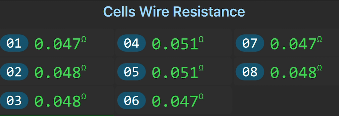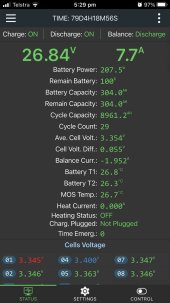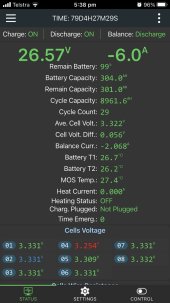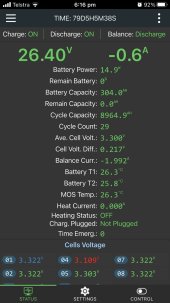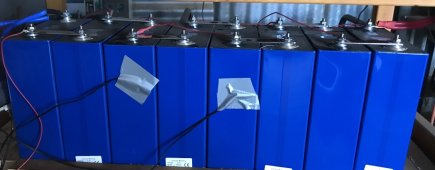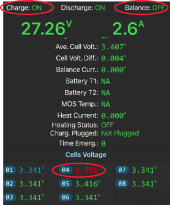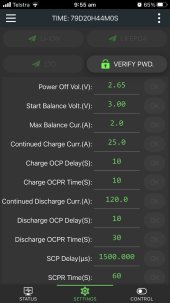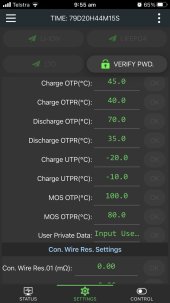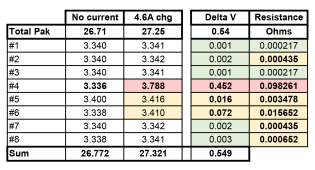mcart117
New Member
- Joined
- Mar 28, 2022
- Messages
- 121
One cell out of eight in a 24v 8s LFP battery is jumping from 3.336V when idle to 3.791V as soon as the battery begins to charge. Any ideas as to why this might be? Is the BMS possibly giving false readings or does this cell have a serious problem?
I made a screen recording of what happens when the battery goes from an idle state to charge, but the format .mov doesn't seem to be supported, so I'll insert a couple of screen shots instead. Watch the voltage of cell 4.
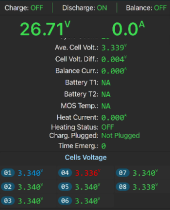
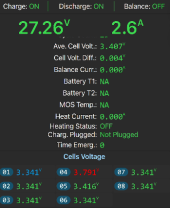
I’d appreciate any thoughts on what to do next.
I made a screen recording of what happens when the battery goes from an idle state to charge, but the format .mov doesn't seem to be supported, so I'll insert a couple of screen shots instead. Watch the voltage of cell 4.


I’d appreciate any thoughts on what to do next.



